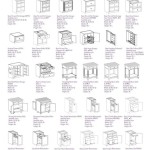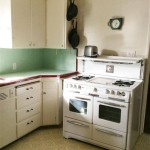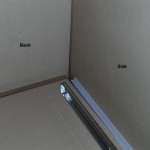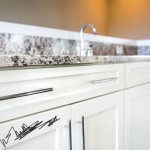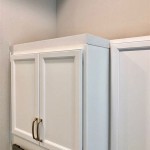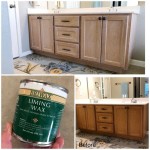```html
How to Cut MDF Kitchen Doors
Medium-density fiberboard (MDF) is a popular material for kitchen doors due to its smooth, consistent surface, affordability, and ease of finishing. Cutting MDF, however, requires specific techniques and tools to achieve clean, chip-free edges and precise dimensions. This article will outline the necessary equipment, preparation steps, and cutting methods for successfully creating MDF kitchen doors.
The primary challenge when cutting MDF lies in its composition. Unlike solid wood, MDF is made of wood fibers bonded together with resin under high pressure and heat. This structure makes it prone to chipping and splintering if not cut correctly. Therefore, employing the right tools, blades, and cutting strategies is crucial for a professional finish.
Choosing the Right Tools
Selecting the appropriate tools for cutting MDF is the foundational step to ensuring a successful outcome. Several options exist, each with its own advantages and disadvantages. The most common tools for cutting MDF include table saws, circular saws, and jigsaws. The choice largely depends on the size and complexity of the cuts, as well as the overall project scope.
A table saw is often considered the ideal tool for cutting MDF, particularly for straight cuts. Its stable platform and adjustable fence allow for precise and repeatable cuts. The use of a specialized MDF blade, discussed later, is paramount when using a table saw.
A circular saw offers portability and versatility, making it suitable for both straight and curved cuts. However, achieving perfectly straight cuts with a circular saw requires careful guidance, often using a clamped straight edge as a guide rail. Kickback is also a bigger concern with a circular saw than a table saw, so proper safety precautions are a must.
A jigsaw is best suited for intricate curves and irregular shapes. While it's not ideal for long, straight cuts, a jigsaw can be invaluable when creating decorative panels or detailed designs on MDF kitchen doors. Using a fine-tooth blade and a slow cutting speed helps minimize chipping when using a jigsaw.
Beyond the primary cutting tool, several other tools are vital for accurate and safe MDF cutting. A measuring tape, square, pencil, and clamps are essential for marking and securing the MDF. Safety glasses and a dust mask are mandatory for personal protection, as MDF dust can be harmful to the eyes and respiratory system. A vacuum cleaner or dust collection system helps keep the work area clean and reduces dust exposure.
Preparing the MDF and Workspace
Proper preparation is key to achieving clean cuts and minimizing waste. This involves inspecting the MDF sheet, accurately marking the cut lines, and securing the material before cutting. Taking the time to thoroughly prepare will significantly improve the final result.
Begin by inspecting the MDF sheet for any damage, such as dents, scratches, or warped areas. These imperfections can affect the final appearance and structural integrity of the kitchen door. If significant damage is present, consider using a different section of the sheet or replacing the entire piece.
Next, accurately measure and mark the cut lines on the MDF sheet. Use a sharp pencil and a precise measuring tape to ensure accuracy. A square is essential for creating perfectly perpendicular lines. For complex shapes or intricate designs, consider using a template or pattern to guide the marking process.
Once the cut lines are marked, secure the MDF sheet to a stable work surface. Clamps are essential for preventing the material from shifting during cutting, which can lead to inaccurate cuts and potential injury. Ensure the clamps are securely fastened and positioned so they do not interfere with the cutting path.
Finally, ensure your workspace is well-ventilated. MDF dust is a known irritant and can pose a health risk with prolonged exposure. Work in a well-ventilated area, preferably outdoors, or use a dust collection system to minimize dust inhalation. Always wear a dust mask or respirator when cutting MDF.
Cutting Techniques for Clean Edges
The technique used for cutting MDF directly impacts the quality of the finished edge. Utilizing the appropriate blade, controlling the feed rate, and employing scoring techniques can all contribute to minimizing chipping and achieving a smooth, clean cut. Experimenting with different techniques on scrap MDF is recommended before cutting the actual kitchen door panels.
Choosing the Right Blade: Using a specialized MDF blade is paramount. These blades typically feature a high tooth count (60-80 teeth) and a Triple Chip Grind (TCG) configuration. The high tooth count allows for a smoother cut, reducing the likelihood of chipping. The TCG configuration, where each tooth has a slightly different angle, further improves the cut quality and extends blade life. Avoid using general-purpose wood blades, as they are more likely to cause chipping and splintering.
Controlling the Feed Rate: The speed at which you feed the MDF into the blade significantly affects the cut quality. A slow, steady feed rate is generally recommended for MDF. Forcing the material through the blade can overload the motor and increase the risk of chipping. Listen to the sound of the saw; if the motor sounds strained, reduce the feed rate.
Scoring the MDF: Scoring involves making a shallow cut along the intended cut line before making the full cut. This helps to prevent chipping by pre-cutting the surface layer of the MDF. When using a table saw, the blade can be raised just enough to score the surface. After scoring, the blade can be raised to the full cutting depth and the cut completed in a single pass. When using a circular saw, a utility knife can be used to score the MDF before cutting.
Using Backer Boards: A backer board is a piece of scrap wood or MDF placed behind the MDF being cut. This provides support to the MDF and helps to prevent chipping on the exit side of the cut. The backer board should be clamped tightly against the MDF. This technique is particularly useful when using a jigsaw or circular saw.
Preventing Tearout: Tearout is the splintering or chipping that occurs on the underside of the MDF when using a saw. To minimize tearout, use a zero-clearance insert on your table saw. A zero-clearance insert is a custom-made insert that fits snugly around the saw blade, minimizing the gap between the blade and the table. This provides support to the MDF and helps to prevent tearout. When using a circular saw, place the MDF face down to minimize tearout on the visible side.
Sanding the Edges: Even with the best cutting techniques, some minor imperfections may remain on the edges of the MDF. Sanding the edges smooth after cutting is essential for achieving a professional finish. Use progressively finer grits of sandpaper, starting with 120-grit and finishing with 220-grit. A sanding block or orbital sander can be used to achieve a smooth, even surface. Be sure to wear a dust mask during sanding to protect against MDF dust inhalation.
By carefully selecting the right tools, preparing the MDF and workspace, and employing appropriate cutting techniques, creating high-quality MDF kitchen doors with clean, chip-free edges is achievable. Remember to prioritize safety and practice on scrap material before cutting the final pieces.
```
Make Your Mdf Cabinet Doors Look Like Solid Wood Woodworking

Cutting Down A Few Cabinet Doors To Fit Young House Love

How To Make Your Own Cabinet Doors Beneath My Heart

How To Make Mdf Cabinet Doors With Cnc Free Plans Toolstoday

How To Build Cabinet Doors Update Your Cabinets Or Built Ins

Cutting Down A Few Cabinet Doors To Fit Young House Love

How To Build Amazing Diy Shaker Cabinet Doors With Mdf Minimal Tools On A Budget Worst The Block

3 Ways To Diy Cabinet Doors From Beginner Pro

Diy Shaker Cabinet Doors The Easy Way Mimzy Company

Cabinet Doors With A Router Table Kreg Tool
Related Posts


